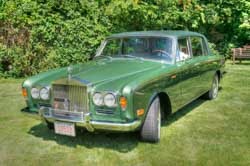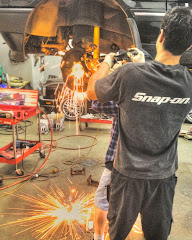Is the radio in your vintage car sounding tinny, scratchy,
or generally awful? If the vehicle is
all original, and it’s more than 10 years old, there’s a good chance your
speakers are shot.
Even if the car is hardly driven at all speaker cones are
prone to dry out and fail. The part that
fails is generally the surround, which is the bit that connects the main body
of the cone to the frame.
Take a look at these two photos and see the difference – one
shows a good surround, while the other shows a surround that has fallen to
pieces. In this speaker the surround was
made of foam, and the foam turned to dust and vanished. When the speaker is played it will sound
terribly scratchy because the voice coil (hidden under the cone) is scraping
the frame. If left unrepaired the coil
may short out, and damage the radio electronics.
Interestingly, the speakers most prone to failure are those
made with foam surrounds in the 1980s and 1990s. Older speakers had rubberized cardboard
surrounds, or simple paper, and they fare batter with time.
And time isn’t the only thing that kills speakers – volume
will do them in, too. When you play the
radio loud the speaker cones are pushed in and out greater distances, which
stresses the cones and surrounds and will eventually lead to failure.
Speaker technology has improved quite a bit in the past
decade, which means the speakers you can buy today are far better than what was
in the older cars. For that reason we
tend to turn to suppliers like Crutchfield rather than buy oem from the
carmaker.
If you are changing speakers in a 1970s car (or something
older) you may find there’s only one wire to the speaker. In those installations the other terminal on
the speaker is connected to ground. When
wiring the speakers you’ll see the terminals marked in red, or with a +
sign. Ground the black or – terminal.
The polarity of speakers is important whenever there is more
than one installed in a system. When
they are the same, they are said to be in phase, and they reinforce each
other When they are backwards they tend
to cancel each other out. Out of phase
systems tend to sound tinny and faint.
Look at the speakers you are replacing and make sure the
polarity is the same when you connect the wires to the new ones.



























No comments:
Post a Comment